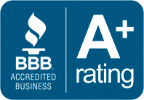Schedule Regular Heating System Maintenance
One of the most important safety measures is home heating maintenance. At least once a year – typically before the winter season – have a licensed technician service your oil-fired furnace or boiler. Regular maintenance ensures that your burner is operating safely and efficiently. During a tune-up, the technician will clean the burner and heat exchanger, replace the oil filter and nozzle, check safety controls, and adjust the system for proper combustion. This reduces the risk of malfunctions like puffbacks (soot explosions) or fuel leaks. A well-maintained home heating system not only runs more safely but also produces less carbon monoxide and uses fuel more efficiently. In short, annual professional maintenance keeps your oil burner in top condition, which protects your household from potential hazards while also lowering the chance of a mid-winter breakdown.
Keep the Area Around Your Furnace Clear
It’s important to treat your furnace or boiler room as a safety zone. Keep the area around the oil burner and heating unit free of any combustible materials. That means no storage of paper, wood, gasoline, paint, or solvents anywhere near the furnace. Even though heating oil itself is not explosive, the burner and exhaust piping can become very hot during operation. Items too close could overheat or catch fire. A good rule of thumb is to maintain at least a three-foot clearance around your furnace, boiler, and flue pipe. This includes keeping children and pets away from the equipment as well – not only to prevent burns from hot surfaces, but also to avoid any tampering with controls. By maintaining a clutter-free, safety-focused zone around your heating system, you minimize fire risks and ensure the equipment has proper airflow. It’s a simple step that greatly improves overall heating oil safety in your home.
Inspect the Heating Oil Tank and Lines for Leaks
Another critical aspect of safety is making sure your oil storage tank and fuel lines remain in good condition. Oil leaks or spills can be hazardous – they can damage property, harm the environment, and pose health risks if not addressed. Perform a visual oil tank inspection regularly. Look for any signs of trouble such as wet spots or staining on the tank’s surface (which might indicate oil seeping), an odor of fuel in the area, or drips under the tank or from fuel lines. Also check the tank’s support legs for stability and any corrosion, especially if the tank is outdoors or in a basement prone to moisture. It’s wise to have a professional inspect your heating oil tank and oil lines annually as part of your service – they can test for wall thinning or weaknesses that aren’t obvious to the eye. If your tank is older (15+ years), consider proactive replacement or installing an extra containment pan underneath as a precaution. For indoor tanks, watch for any unexplained oily sheen on nearby floors or in sump pumps; for outdoor tanks, watch for dead vegetation near the tank which could signal a leak. Catching issues early will prevent minor seepages from becoming major spills. And remember: if you ever do detect a leak or spill, call your oil service provider immediately for help with safe cleanup and repairs.
Install and Monitor Carbon Monoxide Alarms
Burning heating oil in a properly functioning system produces very little carbon monoxide (CO). However, any combustion appliance has the potential to produce CO, especially if it’s not running correctly or if there’s inadequate ventilation. Carbon monoxide is an odorless, invisible gas that can be dangerous, so every home with oil heat should have working CO detectors as a safeguard. Install carbon monoxide alarms on each level of your home, particularly near bedrooms and in the utility room where the furnace or boiler is located. Test these alarms monthly and replace batteries on schedule. If the alarm ever goes off or if you ever feel symptoms like dizziness, nausea, or headache when the heating system is running, ventilate the area immediately and shut off the furnace. Then have a professional inspect the burner for any issues (such as a clogged flue or improper combustion) before restarting it. This scenario is unlikely under normal conditions, but being prepared is key to safety. Modern oil-fired systems typically have numerous safety controls to prevent CO buildup, but a carbon monoxide detector provides an extra layer of protection for your family. It will alert you long before CO levels become hazardous.
Ensure Safe Fuel Delivery and Heating Oil Tank Filling
When it comes to heating oil delivery NYC homes rely on, a few simple steps will make the process safer. First, always keep your fill pipe and vent pipe accessible and in good condition. Clear away any snow, ice, or debris from around the fill pipe, especially in winter, so the delivery driver can safely fill your tank. The vent pipe should have a working whistle (vent alarm) – this device emits a sound during filling that tells the driver when the tank is nearing full. A functioning vent alarm prevents overfilling and spills, so ask your technician to check it during annual service. It’s also a good idea to know how to shut off your oil burner in case the tank ever runs completely dry or if there’s a delivery issue – most systems have an emergency switch (often red) that cuts power to the furnace. If you ever smell oil strongly during or after a delivery, contact your oil company right away to inspect for any spills or leaks. Lastly, consider enrolling in automatic delivery service. This ensures you never accidentally let the tank get empty (which can cause the burner to shut down and potentially draw sludge into filters). Automatic deliveries, guided by your usage history or a tank monitoring device, reduce the risk of run-outs and emergency oil deliveries, making your home heating routine more secure. By being mindful during fuel deliveries and keeping your tank hardware in order, you maintain a safe, steady supply of oil all winter long.
Conclusion: Heating oil is a safe and dependable home heating fuel, especially when these precautions are followed. By maintaining your equipment, preventing fires by keeping areas clear, checking for leaks, using carbon monoxide detectors, and managing fuel deliveries carefully, you’ll keep your home and family protected. Oil heat’s safety record is excellent – and with a little care on your part, you can enjoy worry-free warmth throughout the cold season.
Contact us to see how we can help you with your heating systems!






Managing Bioheat Heating Oil Across Multiple NYC Buildings
For property managers overseeing multiple buildings, heating decisions go beyond individual boilers or one-off deliveries. Heating oil planning at the portfolio level requires consistency, reliability, and long-term operational clarity—especially as cleaner heating fuel options like Bioheat heating oil become more common across NYC.
Signs It’s Time to Replace Your Heating Oil Tank in NYC
Most NYC homeowners don’t think about their heating oil tank—until something feels wrong. A strange odor in the basement. A comment from a delivery driver. A technician pointing out corrosion during routine service. These are usually the moments when homeowners first start asking whether a heating oil tank should be replaced.